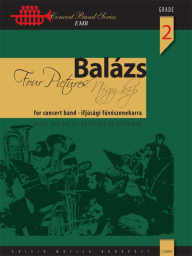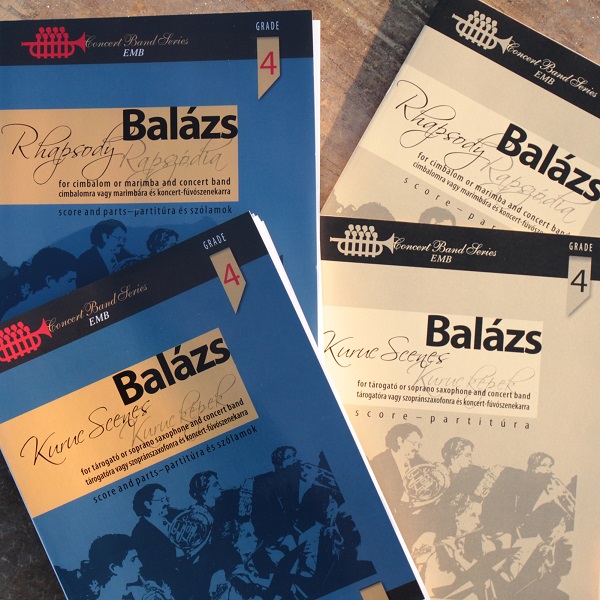Band Music News
Balázs Árpád: Variations on a Theme by Elgar
|
In Árpád Balázs's diverse and varied oeuvre, works for wind orchestra play a prominent role alongside choral music. He composed the Elgar Variations in 2022 on the theme of one of Edward Elgar's (1857-1934) short early works (Love's Greetings, 1888). As Árpád Balázs writes ''The theme I used as the starting point for my work may already be considered a variation, since I 'peeled off' the dense ornamentation and the tonicisations from it, and what remained was the melody, beautiful in its own place. What come back from time to time from the theme in the variations are: the arched structure, the double peak point, and mostly the major sixth leaping downwards, then upwards. The modest, transparent orchestration, which then is amplified at the repetition of the theme is also a defining feature. There is a personal family secret hidden in the third variation: a late compliment to a loyal spouse for the past half century... The closing variation is calm and quiet - similarly to the chorale-like slow movement in Béla Bartók's 3rd Piano Concerto. It is like a message from an old composer to the Future.'' |
Buzzing Polka
|
Buzzing Polka, composed in 1993, is one of the earliest compositions by László Dubrovay (*1943) for concert band, which has become a huge success due to use of special timbres and effects which had been unexploited in the genre earlier. Already the title tells that classical musical values and surprising moments of special brass instrument techniques can be both found in the work. Every second in the striking character piece is made interesting by the excellent balance between the pillar-like harmonies enriched by distant overtones and horizontal melody formation. Performing Buzzing Polka is a great opportunity for conveying the message and values of the music of the 20th and 21st centuries through the contrast between classical melodies and new ways of instrumentation. |
After Mozart
|
László Dubrovay's work, written in 2006, on the 250th anniversary of Mozart's birth, is a salute of a 21st-century composer to one of the greatest geniuses in the history of music. The composer builds his original ideas on one of the best-known melodies of The Marriage of Figaro (Figaro's aria: ''Non pi? andrai, farfallone amoroso''). The series of variations on the theme of the aria is created by the involvement of special instruments, and by fully harnessing their technical abilities, while Dubrovay's hallmark of a perfect balance and peculiar compositional tone is realised on an exceptionally large orchestra. The work is suited to illustrate the potentials of crossovers between different periods in the history of music, but it can also be played at a festive, thematic concert. |
Dubrovay László: Festive Music for symphonic band
|
This work of festive atmosphere was written in 2000 for symphonic band, then the composer arranged it for symphony orchestra. In this piece, László Dubrovay (*1943) parts with his special, hallmark concert band effects; rather, lively vibrations enriched with colliding seconds and distant overtones are brought to the foreground. The special sound is coloured by ornamental trills, appearing even in batches, and vibrating collisions in the high registers. The performance is rendered even more unique by the outer trumpets on both sides of the space. The trumpets and the flugelhorns can be divided into ten parts altogether, thus, the piece can be played by one ensemble or several bands together, as it is usual at the conclusion of large-scale festivals. This composition may be a great choice for festive concerts, since it is a solemn, innovative, and - by virtue of the free arrangement of the performing space - special work at the same time. |
Two new titles by Árpád Balázs have been published
|
Kuruc Scenes The composer uses melodies from the early 18th century, from the age of Rákóczi's war of independence. Rhapsody Rhapsody follows the one-movement structure created by Franz Liszt. The Rhapsody is a passionately emotional lyric orchestral poem rich in colours and characters, which has a place on the repertoire of every concert band playing quality music. Publisherd by Universal Music Publishing Editio Musica Budapest |
 Deutsch
Deutsch Español
Español Français
Français Magyar
Magyar Polski
Polski Română
Română Slovenský
Slovenský Slovenščina
Slovenščina 中文
中文



























